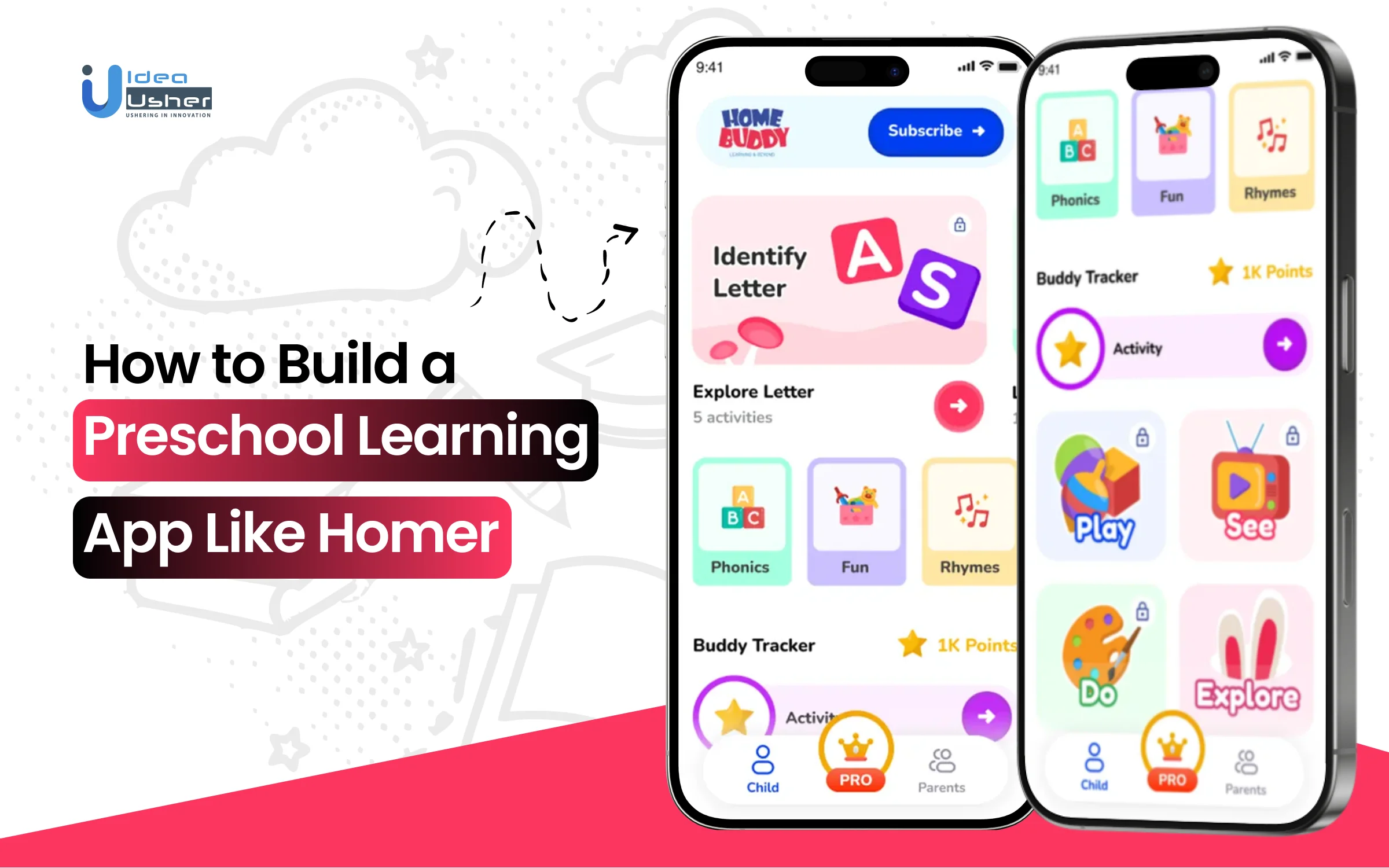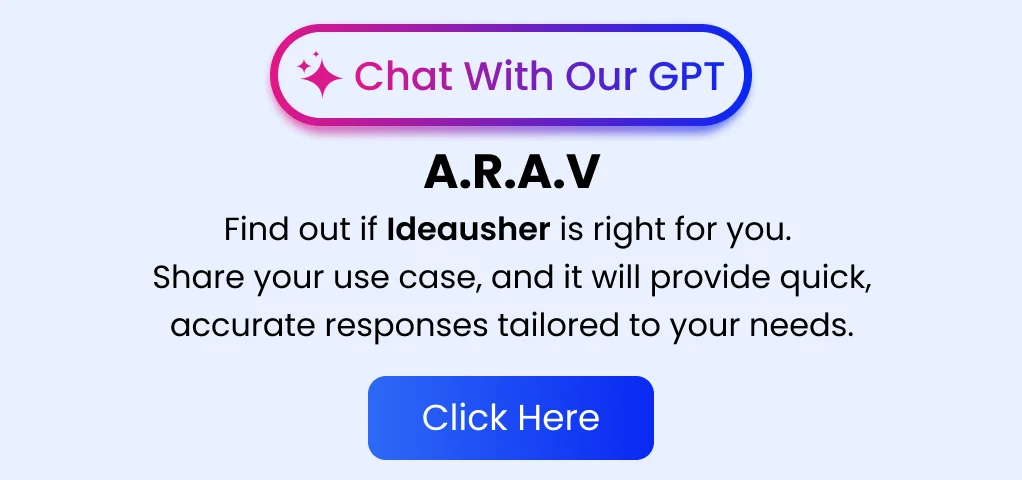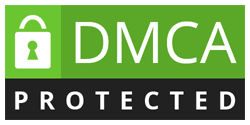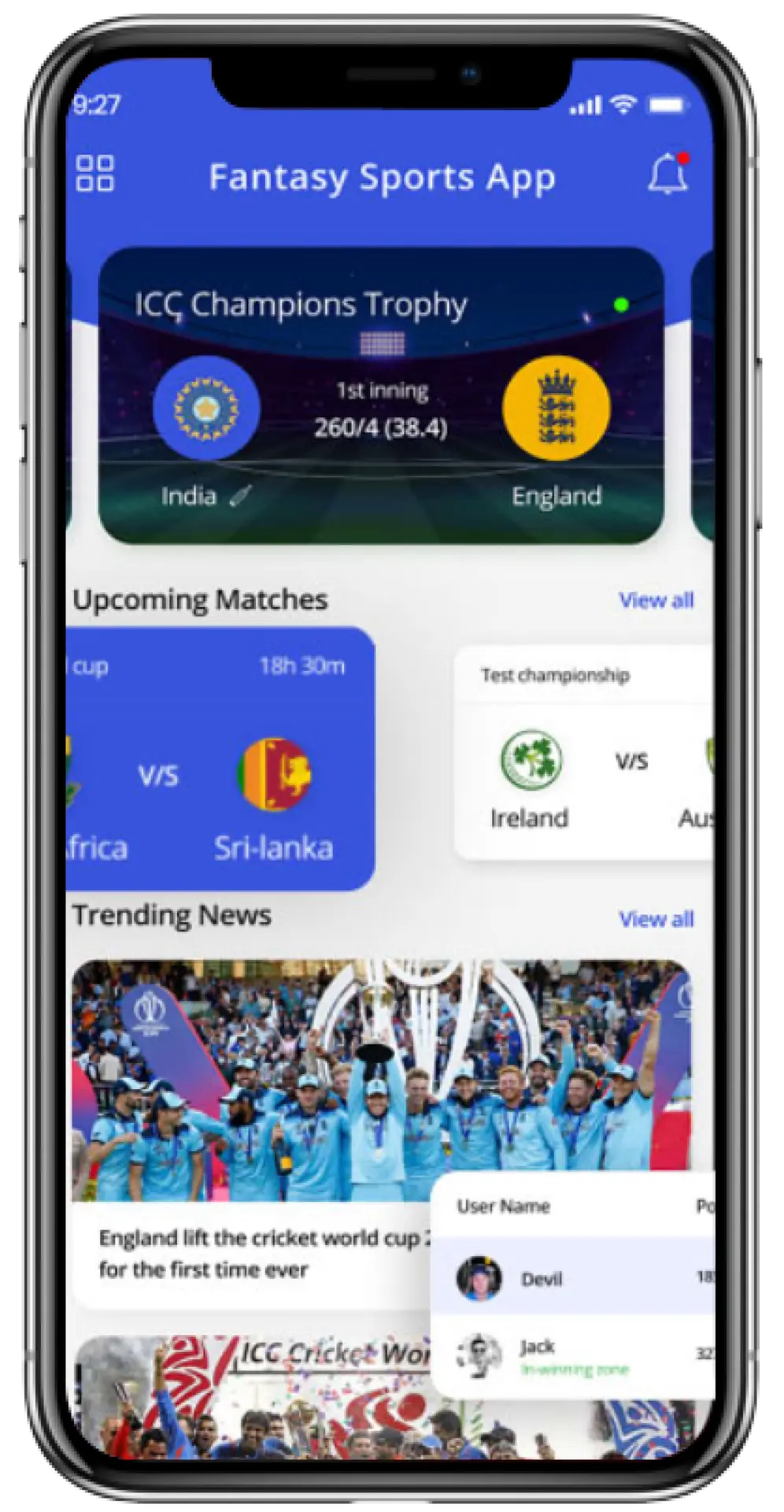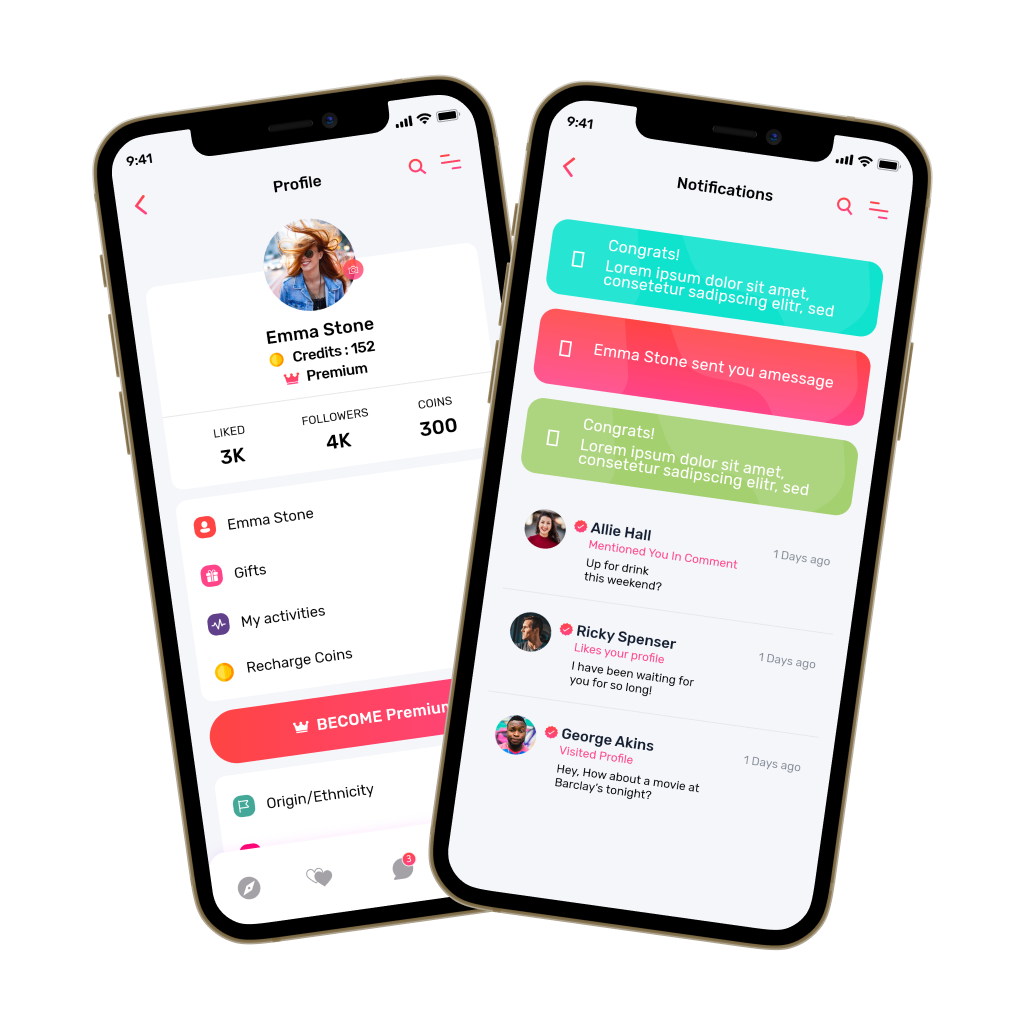Parents know the early years are filled with curiosity, when children eagerly absorb the world around them. In today’s busy routines, many families seek apps that nurture early literacy, numbers, and essential skills in a fun, guided way. That is why building a preschool learning app like Homer is so valuable, turning ordinary screen time into meaningful learning.
Modern preschool apps blend play with learning through personalized learning paths, interactive stories, phonics modules, progress tracking, and child-safe UX. Behind these features are adaptive learning engines, gamified UI, voice interactions, and strong privacy protections that create a confident space for kids to explore while keeping parents reassured.
In this blog, we’ll explore how to build an engaging, development-focused preschool app, covering key features, tech stacks, and design principles that make Homer trusted by families. By the end, you’ll have a clear roadmap for creating a playful, safe, and parent-approved learning platform that supports early childhood growth.

What is a Preschool Learning App, Homer?
HOMER is a personalized early-learning app for children ages 2 to 8, certified by the KidSAFE Seal Program. It supports reading, math, creativity, and social-emotional skills through a research-based method that adapts to each child’s age and skill level. The app keeps learning engaging and developmentally appropriate with interactive lessons, stories, games, and activities that help preschoolers learn through exploration instead of rote memorization.
This preschool learning app provides a structured, evidence-based learning journey with fun, child-friendly interactions. It supports skill-building, independent learning, and positive screen habits, making it a trusted digital learning platform for preschoolers.
- Personalized learning journey that adapts to a child’s age, interests, and skill level for a highly engaging experience. It even asks about a child’s interests such as dinosaurs, sports, or vehicles to tailor the content.
- Reading lessons go beyond visuals and include audio, animation, drawing, and speaking interactions to teach phonics and literacy effectively.
- HOMER supports a wide range of subjects including literacy, social-emotional learning (SEL), early math, creativity, problem-solving, and thinking skills.
- Content structured to grow with a child through stages: Toddler → Preschool → Pre-K → Early Learner → Growing Learner.
- Interactive, play-based content with stories, games, and activities designed to make learning enjoyable and stress-free.
- Parents can track progress, celebrate “I Did It” moments, and view skill mastery to stay connected with their child’s learning journey.
Business Model
HOMER operates as a subscription-based educational platform for young learners, combining content creation, digital distribution, and personalized learning paths. Its model focuses on delivering value to families, educators, and schools while scaling globally.
Key components of HOMER’s business model:
- Direct-to-Consumer (D2C): Families subscribe directly to access HOMER’s full library of interactive learning content.
- Subscription-Based Access: Recurring revenue from monthly or annual subscriptions ensures stable cash flow.
- B2B / School Partnerships: HOMER licenses its platform to schools and educational institutions for classroom use.
- Content Licensing & Creation: The company develops proprietary educational content aligned with research-backed learning methods.
- Freemium/Trial Model: Limited free access allows families to explore the platform before committing to paid subscriptions.
- Global Expansion: Targeting multiple regions, including North America, Europe, and Asia, through digital distribution.
Revenue Model
HOMER’s revenue primarily comes from subscriptions, leveraging both individual and institutional customers. The app combines recurring payments with tiered plans to maximize accessibility and lifetime value.
Key revenue streams:
- Monthly Subscription: Typically around $9.99–$14.99 per month, providing access to the full library and personalized learning.
- Annual Subscription: Discounts for annual commitments, usually $79–$119 per year, encouraging long-term use.
- School / Institutional Licensing: Bulk access packages for schools, priced based on the number of students or classrooms.
- Freemium Conversions: Free trial users convert to paid subscriptions after experiencing value in early lessons.
- Add-Ons & Premium Content: Optional premium content or features may provide additional upsell revenue opportunities.
Learning Frameworks Behind Preschool Apps
Understanding the educational frameworks that shape preschool learning apps is essential for creating engaging, age-appropriate, and effective digital learning experiences. These proven methods guide app design, content, and personalization to maximize learning outcomes.
| Learning Framework | Purpose / Benefit | Implementation in App |
| Play-Based Learning | Encourages creativity, exploration, and social-emotional development | Games, story-driven activities, problem-solving challenges, and interactive play scenarios |
| Phonics-Based Literacy | Builds foundational reading skills and language fluency | Audio-guided letter sounds, word recognition, spelling patterns, interactive stories and songs |
| Early Numeracy Models | Develops counting, number sense, and problem-solving skills | Counting games, number recognition, addition/subtraction exercises, patterns and puzzles |
| Interactive Sensory Learning | Engages multiple senses, improves memory, and supports fine motor skills | Drag-and-drop puzzles, shape matching, interactive storytelling, sound and visual cues |
| Adaptive Difficulty Learning | Ensures content is challenging yet achievable, improving engagement | Personalized learning paths, auto-adjusted lesson difficulty, progress-based content recommendations |
How 75% of Preschoolers Using Learning Apps Creates Market Opportunities?
The global early childhood education market is booming and valued at approximately USD 391.93 billion in 2024 and is projected to reach around USD 1,399.64 billion by 2034, growing at a CAGR of 12.4% from 2025 to 2034. This highlights a rapidly expanding demand for quality early-learning solutions, including digital apps.

Following the global growth trends, it’s notable that 75% of preschoolers use apps focused on learning or development, reflecting high engagement and adoption among young children. This presents a strong business opportunity for entrepreneurs looking to launch preschool learning apps.
High Adoption of Learning Apps by Preschoolers
Preschoolers are increasingly using digital learning tools, which demonstrates clear engagement patterns and opportunities for app developers to design content that resonates with young users.
- 81% of UK children aged 0–5 have used an app on a tablet or smartphone in the last six months.
- 62% engaged with puzzles and games, while 61% used counting/numeracy apps, and 60% used letter/reading apps.
- Indicates strong adoption trends, helping entrepreneurs identify which content types are most appealing for preschool users.
Positive Impact on Learning Outcomes
Well-designed educational apps support foundational skills and cognitive development, giving parents confidence in their children’s screen time and encouraging repeat use.
- A study by the Joan Ganz Cooney Center (USA) found that preschoolers using educational apps improved letter recognition, phonics skills, and early literacy comprehension.
- Interactive features such as storytelling, audio cues, and problem-solving enhance engagement and retention.
- Demonstrates that evidence-based content increases the credibility and perceived value of your app among parents.
Parent Trust and Investment Willingness
Parents are the primary decision-makers for preschool apps, and their trust and willingness to invest are crucial for successful monetization.
- In the USA, nearly 92% of preschoolers have access to digital devices, highlighting a broad potential user base.
- Parents prefer apps that are safe, ad-free, and aligned with early-learning frameworks, prioritizing educational value.
- Survey says 82% of children’s apps downloaded are free, highlighting the importance of freemium models in early learning markets.
Personalization Drives Engagement
Adaptive and personalized learning experiences help maintain engagement, encouraging children to spend more time on educational activities while increasing retention for the app.
- A controlled EdTech trial showed personalized content recommendations increased content consumption by ~60%.
- Adaptive learning paths tailored to skill levels and interests boost long-term engagement and keep children returning to the app.
- Personalization is a key differentiator for preschool apps, helping entrepreneurs stand out in a competitive market.
The preschool learning app market attracts entrepreneurs with high adoption, trust, and proven results. With widespread device access, demand for quality, multi-subject solutions remains strong. Focusing on age-appropriate, adaptive, and safe content helps businesses enter a growing market and improve early education. Launching a preschool app offers access to an expanding, receptive market with significant educational potential.

Preschool Curriculum & Content Strategy Implementation
A preschool learning app like Homer development needs a thoughtful curriculum tailored to each stage. Our approach makes sure content is engaging, age-appropriate, and meets early-education standards, delivering measurable outcomes and keeping children motivated.

A. Age-Based Content Structuring
Content must be tiered by age and developmental milestones. For example:
- Ages 2–3 (Toddlers): Simple visual recognition activities, basic shapes, colors, and sensory games. Lessons should be short and interactive to match limited attention spans.
- Ages 3–4 (Preschool): Introduce phonics, simple words, counting, and puzzle-based problem-solving. Content can incorporate basic story comprehension and creativity-focused activities.
- Ages 4–6 (Pre-K / Early Learners): Focus on reading readiness, numeracy, critical thinking, and more complex story-based challenges. Encourage independent learning with guided exercises and milestone tracking.
B. Types of Content
A diverse range of content keeps children engaged and supports holistic development:
- Interactive Stories: Foster literacy, comprehension, and imagination.
- Puzzles & Games: Encourage problem-solving, spatial awareness, and logical thinking.
- Phonics & Numeracy: Build foundational reading and math skills with multisensory approaches.
- Shapes & Sensory Learning: Enhance fine motor skills, recognition, and cognitive development.
- Hands-on Activities: Encourage creativity and real-world connections.
C. Importance of Visual and Auditory Cues
Young learners rely heavily on visual and auditory signals to understand new concepts. Bright colors, animations, narration, and sound effects reinforce learning, aid memory retention, and maintain attention. Combining visual and auditory elements creates a multisensory experience that caters to diverse learning styles.
D. Alignment with Early-Education Frameworks
All content should align with early-education standards like Head Start, Common Core (pre-K), or state guidelines to ensure effectiveness, credibility, and measurable skill development, building trust with parents and educators.
Key Features to Integrate in a Preschool Learning App Like HOMER
Creating a successful preschool learning app like HOMER requires more than colorful visuals. To build an app that engages children, supports skill development, and appeals to parents, you need personalization, interactivity, safety, and measurable outcomes. Below are the key features to integrate during development.

1. Interest-Based Personalized Learning
A critical feature is personalizing the learning journey based on a child’s age, skill level, and interests. This ensures lessons remain engaging, motivate children to continue learning, and adapt as their abilities grow. It should integrate adaptive algorithms that adjust content dynamically.
2. Multi-Subject Curriculum
Include modules that cover literacy, numeracy, creativity, thinking skills, and social-emotional learning. Offering a multi-subject approach helps children develop holistically and positions your app as a comprehensive early-learning solution.
3. Interactive Storybooks & Games
Integrate touch-responsive storybooks, mini-games, puzzles, and activity-based lessons to make learning playful and memorable. Interactivity increases engagement and retention, ensuring children return to the app consistently.
4. Research-Backed Learning Outcomes
Incorporate structured, evidence-based lesson pathways to achieve measurable learning improvements. Features that track progress and skill mastery can demonstrate tangible benefits to parents, increasing trust and subscription conversions.
5. Safety & Compliance
Develop the app to be ad-free, secure, and compliant with COPPA and GDPR. Consider third-party safety certifications for added credibility. Safety features are essential to gain parent confidence and promote adoption.
6. Parental Dashboard & Insights
Provide a dashboard for parents to track progress, monitor skill development, and receive activity recommendations. Including insights and printable resources strengthens parent engagement and reinforces learning beyond the app.
7. Offline Learning & Cross-Platform Support
Enable offline access for lessons and activities to maintain learning without an internet connection. Ensure compatibility across iOS, Android, and tablets to reach a wider audience and improve usability.
8. Multi-Profile Support
Include support for multiple child profiles so families can manage learning journeys for more than one child. Each profile should have personalized content, rewards, and progress tracking.
9. Age-Tiered Learning Journey
Structure the curriculum to grow with the child, offering age-appropriate content from toddler stages through early elementary levels. Progressive content ensures long-term engagement and value for families.
10. Multisensory, Play-Based Instruction
Include audio, visual, drawing, and speaking interactions in lessons to engage multiple senses. Multisensory learning enhances retention, caters to different learning styles, and keeps children actively engaged.

How to Build a Preschool Learning App Like HOMER?
Developing a preschool learning app like HOMER requires a child-centric design, multi-subject learning, and parent-focused features. Our team ensures the app is not just engaging but also educational, safe, and scalable. Here’s how we approach the development process:

1. Consultation
We begin by understanding your vision and educational goals. Our developers and product strategists work with you to define the target age group, skill focus, and learning objectives. This ensures the app addresses holistic child development, not just reading.
2. Market Research
Our team conducts detailed market research to identify trends in multi-subject learning, adaptive content, and parental expectations. By analyzing competitors and user needs, we pinpoint opportunities to differentiate your app and provide a truly unique learning experience.
3. App Architecture Planning
We design a scalable and robust architecture that supports adaptive learning, multi-profile management, offline functionality, and cross-subject content. This ensures smooth performance, seamless progress tracking, and future scalability as your app grows.
4. Kid-Friendly UI/UX Design
Our designers craft an intuitive interface with engaging visuals, interactive elements, and simple navigation suitable for young children. We make sure the design encourages exploration across multiple subjects while remaining parent-friendly for easy oversight.
5. Personalized Learning Path Setup
We develop interest-based and skill-level personalization so each child receives a tailored learning journey. Our developers implement algorithms that adjust content dynamically, track milestones, and recommend new activities to maximize engagement and learning outcomes.
6. Content Management System Development
We build a flexible and robust CMS that allows your team to add or update multi-subject lessons, games, and activities efficiently. The CMS supports categorization by skill, age, and subject, making scaling and content management seamless.
7. Interactive Features
Our developers integrate story-based lessons, gamified exercises, drawing, audio, and problem-solving activities. These multisensory features make learning engaging, reinforce concepts, and ensure children remain motivated to return to the app.
8. Parental Dashboard & Controls
We design a parent dashboard that provides real-time insights, learning recommendations, and printable resources. Our team also implements parental controls to manage screen time, customize learning paths, and monitor progress, building trust and adoption.
9. Offline Learning & Cross-Platform Compatibility
We ensure lessons and activities are available offline and optimize the app for iOS, Android, tablets, and smartphones. This guarantees continuous learning, accessibility, and convenience for families.
10. Testing & Launch
Our team conducts extensive usability testing with children and parents, focusing on engagement, comprehension, and multi-subject learning effectiveness. We refine the app based on feedback and execute a soft launch to ensure readiness for full-scale adoption.
Cost to Build a Preschool Learning App
A preschool learning app like HOMER development involves investing in planning, design, development, content, and testing. Costs vary based on features like multi-subject modules, personalized pathways, parental dashboards, and gamification, crucial for success. Here’s a cost breakdown for each phase.
| Development Phase | Description | Estimated Cost |
| Consultation | Defining app vision, target age group, learning objectives, and holistic educational goals. | $3,000 – $5,000 |
| Market Research | Competitor analysis, user needs, multi-subject trends, and opportunities for differentiation. | $4,000 – $7,000 |
| App Architecture Planning | Designing scalable backend to support adaptive learning, multi-profile management, offline access, and multi-subject content. | $6,000 – $10,000 |
| Kid-Friendly UI/UX Design | Creating child-first interface with intuitive navigation, interactive visuals, and parent-friendly dashboards. | $8,000 – $12,000 |
| Personalized Learning Path Setup | Developing algorithms for interest-based and skill-level personalization, milestone tracking, and adaptive content recommendations. | $13,000 – $22,000 |
| Content Management System Development | Building a flexible CMS for multi-subject lessons, gamified activities, and easy content updates. | $10,000 – $18,000 |
| Interactive Features | Integrating storybooks, games, puzzles, audio, drawing exercises, and gamification to boost engagement. | $15,000 – $24,000 |
| Parental Dashboard & Controls | Creating a dashboard with progress tracking, recommendations, printable resources, and screen-time management features. | $12,000 – $18,000 |
| Offline & Cross-Platform Compatibility | Ensuring offline access and optimizing the app for iOS, Android, tablets, and smartphones. | $5,000 – $8,000 |
| Testing & Launch | Conducting usability testing with children and parents, refining features, and preparing for a successful soft launch. | $7,000 – $10,000 |
Total Estimated Cost: $55,000 – $125,000
Note: Development costs vary with project scope, content complexity, adaptive learning, and features like gamification, reporting, and security. Budget for updates and maintenance.
Consult with IdeaUsher for a tailored estimate and plan to build a scalable preschool app with multi-subject content, personalization, and parental engagement.
Tech Stack Recommendations for Preschool Learning App Development
Selecting the right tech stack ensures your preschool learning app like HOMER is scalable, secure, and engaging, while supporting smooth updates and future growth.
1. Front-End (Mobile UI/UX)
Frameworks like React Native and Flutter enable cross-platform development, while Swift and Kotlin ensure native performance and smooth animations, creating an interactive, child-friendly interface.
2. Back-End / Server
Using Node.js, Django, Ruby on Rails, or Spring Boot allows the back-end to manage user accounts, content delivery, and learning paths with speed, security, and scalability.
3. Database
Databases like Firebase, PostgreSQL, and MongoDB store user profiles, progress, and content. They provide real-time updates, structured and flexible data handling, ensuring smooth app functionality.
4. Content Management System (CMS)
Platforms such as Strapi, Contentful, or a custom CMS simplify adding, updating, and organizing content, keeping the app scalable and easy to manage.
5. Cloud Services / Hosting
Cloud services like AWS, Google Cloud, and Microsoft Azure ensure reliable hosting, scalable storage, and high availability, supporting growth without performance issues.
6. Security & Compliance
Implementing OAuth 2.0, HTTPS, encryption, and COPPA/FERPA compliance ensures a safe, child-friendly environment while maintaining parental trust and legal adherence.
Challenges & Solutions During Preschool Learning App Development
A preschool learning app like HOMER development involves unique challenges due to the target audience, educational requirements, and parental expectations. Below, we outline the key hurdles and explain how our development team addresses each one.
1. Creating Age-Appropriate Content
Challenge: Developing content suitable for ages 2–6 is tricky because each age group has distinct cognitive and motor skill levels. Lessons that are too advanced or too simple can disengage children.
Solution: We design tiered content for toddlers, preschoolers, and early learners, integrating visual cues, auditory support, and interactive elements. Personalized learning pathways adjust difficulty based on the child’s progress, ensuring each lesson is engaging and developmentally appropriate.
2. Maintaining Engagement Across Multiple Subjects
Challenge: Young children have short attention spans, and covering multiple subjects (literacy, numeracy, creativity, socio-emotional skills) without overwhelming them is difficult.
Solution: We integrate gamification, interactive stories, puzzles, and multisensory activities that make learning playful. Our team structures lessons into short, manageable sessions and uses interest-based content to maintain curiosity and motivation.
3. Ensuring Safety and Parental Trust
Challenge: Apps for preschoolers must comply with COPPA, GDPR, and other child safety regulations. Any data breach or unsafe feature can destroy trust.
Solution: Our developers implement ad-free environments, parental controls, and strict data protection measures. We also incorporate secure login systems, age-appropriate content filtering, and compliance checks to ensure the app meets all legal and safety standards.
4. Designing an Intuitive UI/UX for Young Children
Challenge: Preschoolers cannot navigate complex interfaces, and poorly designed apps can frustrate children and parents alike.
Solution: We create bright, engaging, and simple interfaces with large icons, intuitive navigation, and clear instructions. Interactive elements are consistent across modules, making it easy for children to explore and learn independently while parents feel confident guiding them.
5. Offline Access and App Performance
Challenge: Providing offline functionality while maintaining smooth performance and syncing progress across devices is technically demanding.
Solution: Our developers build optimized offline modules for lessons, stories, and games, while background syncing ensures that progress is updated automatically when the device reconnects. This guarantees uninterrupted learning and seamless user experience.
Conclusion
Developing an engaging and educational platform for young learners requires careful planning, intuitive design, and interactive content. Preschool learning app like Homer development focuses on creating personalized learning journeys, fun activities, and skill-building exercises that keep children motivated. By integrating features such as progress tracking, gamified lessons, and parental controls, developers can ensure a safe and productive learning environment. Prioritizing scalability, performance, and content quality allows the app to grow with its users while providing a reliable, enjoyable, and effective early education experience for preschoolers.
Why Choose IdeaUsher for Preschool Learning App Development?
IdeaUsher creates early learning platforms that blend interactive lessons with child safe environments. Our team understands how preschoolers learn, and we design apps that build foundational skills through visual activities, guided lessons, and adaptive learning journeys. Whether you want a structured curriculum or open ended exploration modules, we build solutions that fit your vision.
Why Work with Us?
- Early Learning Expertise: We design development focused learning apps aligned with preschool education standards.
- Custom Interactive Modules: Our team builds lessons, games, and activities customized for young learners.
- Secure and Compliant Development: We follow strict safety and privacy requirements for children’s apps.
- Robust Performance: We deliver stable platforms that parents and educators can rely on.
Browse our portfolio to discover how we have helped organizations launch high quality early learning products.
Connect with us today and start building a preschool app that makes learning simple, engaging, and effective.
Work with Ex-MAANG developers to build next-gen apps schedule your consultation now
FAQs
Essential features include gamified lessons, progress tracking, interactive activities, personalized learning paths, parental controls, and engaging visuals. These features motivate children, reinforce early learning, and allow parents to monitor development effectively.
Costs depend on app complexity, number of features, and platform choice. A basic version may start around $55,000, while a fully-featured, interactive, and scalable app can reach $125,000 or more.
Age appropriate design focuses on simple navigation, large visuals, short lessons, and interactive activities. Content must match early childhood development standards to support foundational skills in literacy, numeracy, and creativity.
Parental involvement features include dashboards, progress reports, suggested activities, and custom lesson plans. These tools help parents stay informed and actively support their child’s early learning journey.
